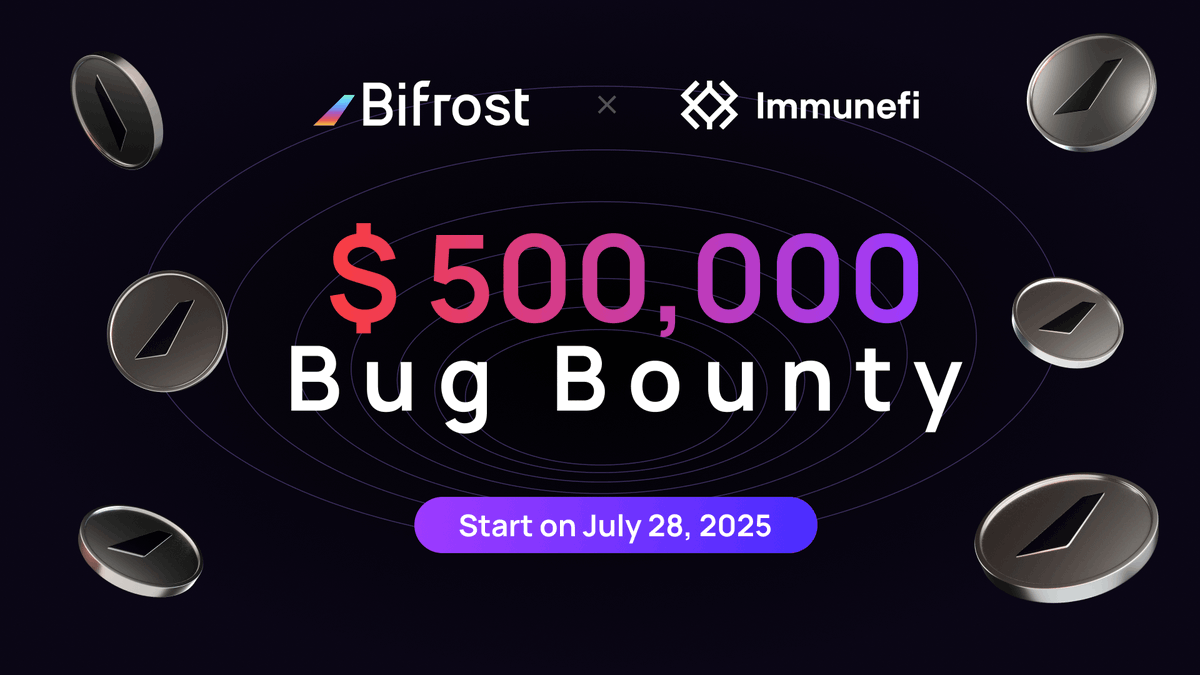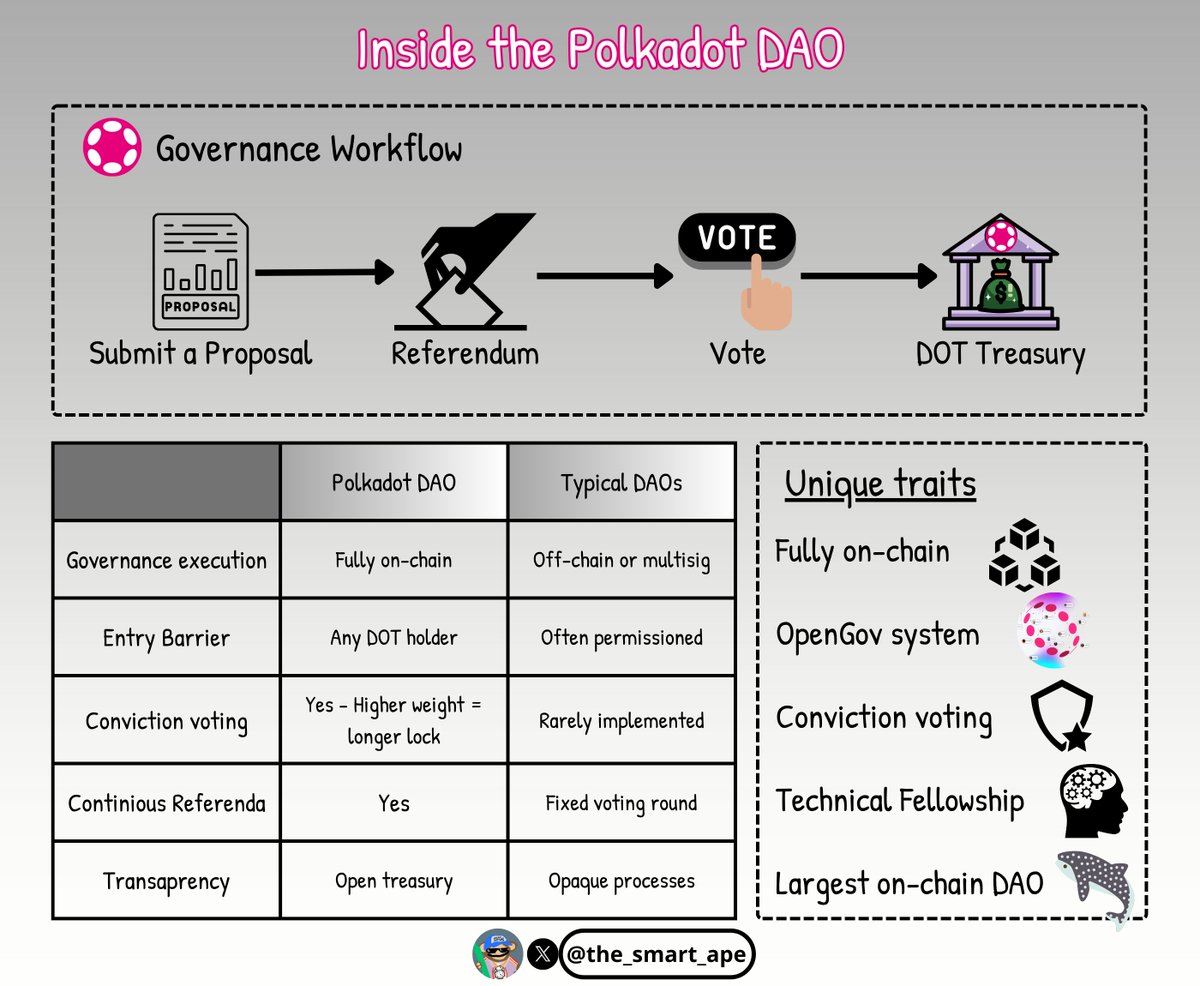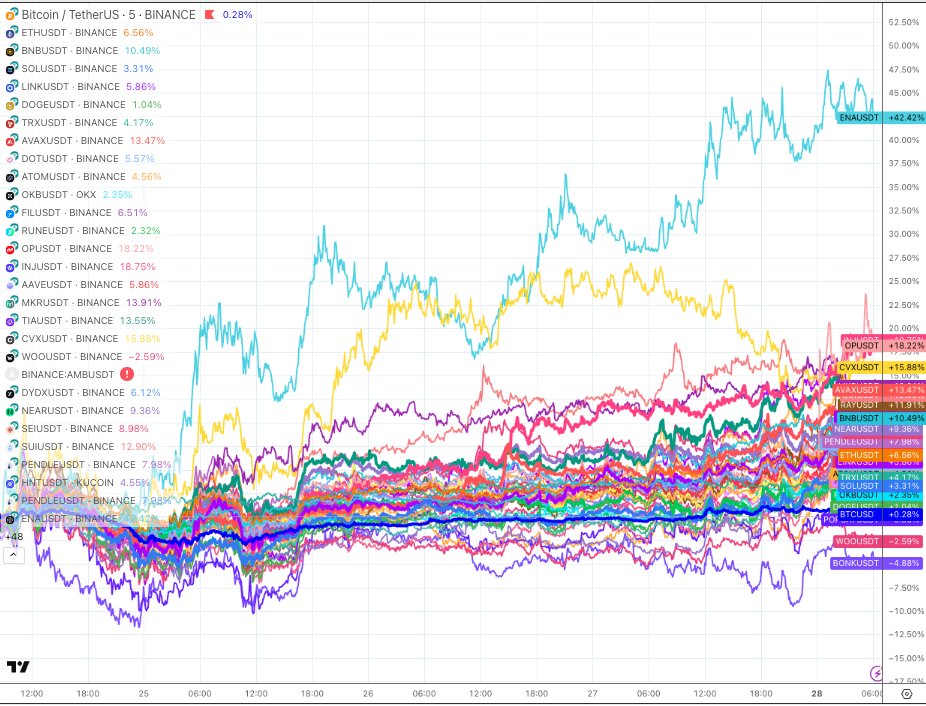Cours de Polkadot
en USD

À propos de Polkadot

Avis de non-responsabilité
Performance du cours de Polkadot
Polkadot sur les réseaux sociaux




Guides

Créez gratuitement un compte OKX.
Approvisionnez votre compte.
Choisissez votre crypto.
FAQ Polkadot
OKX propose plusieurs façons de demander de l'aide. Notre libre-servicecentre d'assistances'adresse à des questions courantes sur l'achat, la vente et le trading d'actifs numériques. Nous avons également une communauté mondiale florissante, accessible par différents canaux, notamment Telegram, Reddit, Facebook, Line, Weibo et Twitter.
Plongez dans l’univers de Polkadot
Souvent appelé la "blockchain des blockchains", Polkadot est un métaprotocole de layer 0 de nouvelle génération et une blockchain à code source ouvert lancée en mai 2020 pour concrétiser la vision plus large d'une blockchain sûre, résiliente et équitable Web3.
Polkadot réunit un réseau de blockchains natives de layer 1, appelées parachains, et de multiples blockchains externes (connectées à ce réseau à l'aide d'une technologie de pontage innovante), ce qui leur permet de fonctionner à l'échelle, les unes à côté des autres, de manière transparente.
Les parachains et les blockchains externes peuvent interagir librement les uns avec les autres, ce qui les rend interopérables. Il s'agit d'un changement important par rapport à la conception cloisonnée des blockchains conventionnelles Ethereum et Bitcoin.
Les parachains peuvent traiter des transactions simultanément, ce qui réduit la charge de la chaîne principale et facilite l'évolutivité. Ils permettent également aux développeurs de personnaliser leurs blockchains, ce qui leur permet d'optimiser les parachains pour des cas d'utilisation spécifiques avec leurs jetons natifs.
La chaîne relais est la chaîne centrale de Polkadot, créée à l'aide du cadre Substrate. La chaîne relais est responsable du maintien de la sécurité partagée de Polkadot, de l'interopérabilité entre les chaînes et du mécanisme de consensus. Elle a été conçue pour gérer des fonctions minimales, notamment la gouvernance du réseau et la preuve d'enjeu nommée (NPoS). Tous les validateurs sont liés à la chaîne de relais et confirment les transactions des parachains connectés.
L'écosystème Polkadot comprend également des parathreads, qui sont des parachains basés sur un modèle de paiement à l'utilisation, ce qui les rend plus abordables. Les parachains et les parathreads peuvent se connecter et communiquer avec des blockchains externes comme Bitcoin ou Ethereum à travers des ponts.
Le réseau est sécurisé par le mécanisme de consensus NPoS. Les utilisateurs peuvent choisir de participer au système de consensus en tant que nominateurs ou validateurs. Les nominateurs peuvent sélectionner des validateurs dignes de confiance pour mettre à jour le réseau, tandis que les validateurs vérifient les transactions. Les nominateurs et les validateurs stake DOT et recevoir des récompenses en retour.
Cas d'utilisation de DOT
Le DOT a de multiples fonctions au sein de l'écosystème Polkadot. C'est la monnaie utilisée pour payer les frais de transaction lors de l'envoi de données ou de jetons entre les chaînes. Il sert également de jeton de gouvernance que les utilisateurs peuvent mettre en jeu pour voter sur l'avenir de Polkadot.
Les jetons DOT servent également de monnaie pour inciter les utilisateurs à maintenir la sécurité du système. Les utilisateurs peuvent faire du staking sur des DOT pour participer au mécanisme de consensus du réseau. Le DOT est également utilisé pour le bonding, un type de Proof of Stake (preuve d'enjeu). En liant les jetons, les développeurs peuvent créer de nouvelles parachaines, tandis que le retrait des actifs liés supprime les parachaines obsolètes.
La tokenomics et la distribution du DOT
DOT est un jeton inflationniste, ce qui signifie qu'il n'a pas de plafond ou d'offre maximale. Son taux d'inflation est d'environ 10 %, de nouveaux jetons étant générés pour encourager les validateurs. Il est possible de transférer des DOT en fractions, la plus petite unité étant 0,0000000001 DOT, appelée Planck.
10 millions de jetons DOT ont été générés lors de son premier Initial Coin Offering (ICO) qui s'est tenu en octobre 2017. Les jetons ont été distribués de la manière suivante:
- 50 pour cent: Acheteurs de l'ICO
- 30 pour cent: Fondation Web3 pour le développement de Polkadot et d'autres activités de la Fondation.
- 11,6 pour cent: Fondation Web3 pour les futures initiatives de collecte de fonds
- 5 pour cent: Vente privée en 2019
- 3,4 pour cent: Vente de jetons en 2020
Une redénomination du DOT a eu lieu le 21 août 2020, après un référendum à l'échelle du réseau. En conséquence, le solde de DOT de tous les détenteurs existants a été automatiquement augmenté d'un facteur 100. L'offre initiale de 10 millions de DOT est passée à 1 milliard après la redénomination, et la valeur marchande de chaque jeton DOT a diminué d'un facteur 100. Cet événement est connu sous le nom de "Denomination Day".
À propos des fondateurs
Polkadot est le projet phare de la Fondation Web3, qui a été formée par Gavin Wood, Peter Czaban et Robert Habermeier en 2017. La Web3 Foundation est une fondation à but non lucratif basée en Suisse, créée pour soutenir la recherche, le développement et les efforts de collecte de fonds de Polkadot.
Bien connu dans le monde de la crypto et de la blockchain, Wood est l'un des pionniers de la technologie de la blockchain. Il est le cofondateur et l'ancien directeur technique d'Ethereum et le fondateur de Parity Technologies. En outre, Wood a inventé le terme Web3 en 2014.
Wood a également inventé Whisper, un P2P communication protocol, le consensus Proof of Authority et le langage de programmation Solidity. Il dirige actuellement les initiatives d'innovation sur Polkadot et Substrate.
M. Czaban est titulaire d'une maîtrise en ingénierie de l'Université d'Oxford et a cofondé la Fondation Web3 et Polkadot avec M. Wood. En tant que directeur technologique de la Fondation Web3, M. Czaban soutient la création de technologies distribuées de nouvelle génération.
Habermeier est un Thiel Fellow qui possède une vaste expérience en matière de recherche et de développement dans les domaines de la cryptographie, des systèmes distribués et de la technologie blockchain. En tant que membre de longue date de la communauté Rust, Habermeier est également largement connu pour l'utilisation de Rust pour développer des solutions parallèles et de haute performance.
Déclaration ESG
































